Vast pool of skilled developers and competitive rates make India a leading destination for mobile app development.
In this article App Developers India examines the key factors like developer salaries, project complexity, and location that drive cost for app development in India
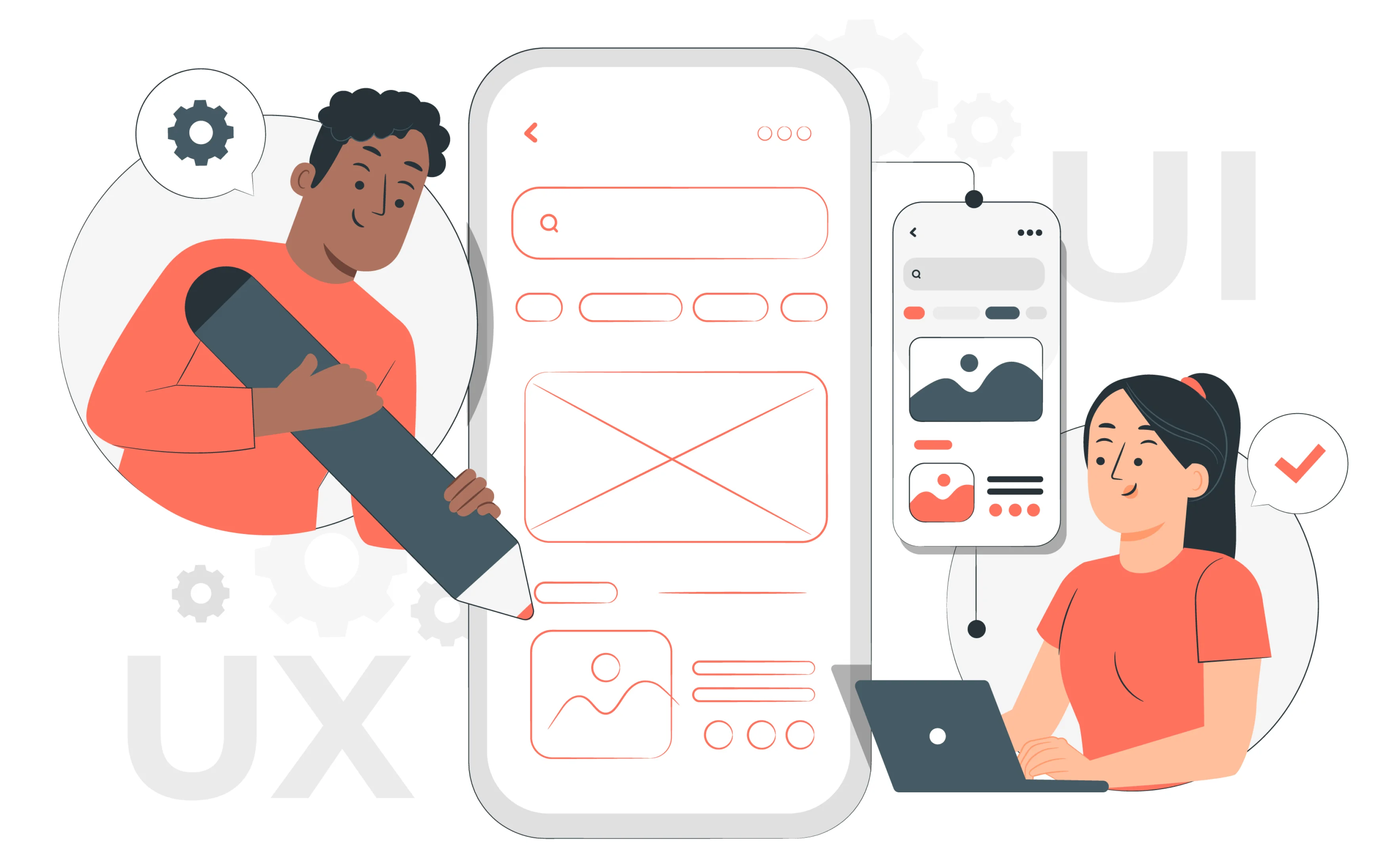
Mobile app development cost
A mobile app development cost can vary significantly based on a number of variables, such as the app's complexity, functionality, platform (iOS, Android, or both), design specifications, the hourly rates of the development team, the developer's location, and extra services like updates and maintenance. Below is a summary of some typical cost components:
- Complexity and Features: Simple apps with basic features will be less expensive than complicated apps with sophisticated features like social media integration, user authentication, and payment integration.
- Platform: The cost of developing for iOS, Android, or both will vary. Because there are typically fewer devices to test on, iOS development can be slightly more expensive, however this can vary depending on your target market.
- Design: UI/UX design of the highest caliber is essential to user engagement. The pricing will vary depending on how complicated the design aspects are and how many screens are needed.
- Development Team: Depending on experience and region, rates for developers can differ significantly. Outsourcing to nations with lower labor costs will typically be less expensive than hiring a local agency or independent developers in areas with higher cost of living.
- Testing and Deployment: Two crucial stages of app development are quality control and testing. The cost increases with the extent of testing necessary.
- Updating and Maintenance: After your app is launched, you'll need to do routine updates and maintenance. This raises the total cost because it could entail upgrading functionality, repairing issues, and making sure the product works with new OS releases.
- Extra Services: There can be fees associated with integrating with third-party services like analytics programs or payment gateways.
ios app development cost in india
The complexity of the program, the features that are needed, the design requirements, and the development team's level of experience can all affect how much an ios app development cost in india. Because labor costs are lower in India than in many Western countries, app development rates there are generally lower.
You may anticipate paying somewhere between $5,000 and $20,000 for a basic iOS app that is produced in India. However, depending on the specifications of the project, the price could range from $20,000 to $100,000 or more for more sophisticated apps with sophisticated features.
To get precise cost estimates for your iOS app development project in India, you must be very explicit about your needs and financial limitations while speaking with possible development partners.
Android app development cost in India
The price of creating an Android app in India might vary depending on the app's complexity, features that are wanted, the design specifications, and the team's level of experience. Because labor costs are lower in India than in many Western countries, app development rates there are generally lower.
The price range for a basic Android app produced in India might be between $3,000 and $15,000. However, depending on the needs of the project, the price could go up to $50,000 or more for more sophisticated apps with sophisticated features.
To get precise Android app development cost in India estimates for your Android app development project in India, you must be very explicit about your needs and your financial limits while speaking with possible development partners.
Factors That Affect Mobile App Development Cost In India
There are not one or two, but many factors involved in finding out the mobile app development cost in India. Here we will provide you with the factors that can highly fluctuate the cost calculation. The list of factors that affect mobile app development.
- App complexity
- Platform type
- Mobile app type
- Developer type
- Location type
- State type
- Screen type
- Experience level
- Custom functionality
Let our experts help you
with no obligation.
App Development Cost In India Based On App Complexity
App complexity is a significant cost driver for mobile app development cost in India. Simple apps with basic features and minimal functionality can be built relatively cheaply. The price keeps going up along with the complexity.
| App Complexity | Price Range (Approx.) |
|---|---|
| Simple Apps | $1,000 - $10,000 |
| Moderate Complexity | $10,000 - $50,000 |
| Complex Apps | $50,000 - $200,000 |
Cost For App Development In India Based On Platform Type
The type of platform highly affects app development price in India. Once you are clear on the platforms that you want, we can optimize the price to find the best price that fits your pocket.
Android app development is more affordable than iOS, given Android's open-source nature and greater developer availability. Building apps for both platforms naturally incurs higher costs than single-platform development.
| App Complexity | Price Range (Approx.) |
|---|---|
| Simple Apps | $10,000 - $50,000 |
| Moderate Complexity App | $50,000 - $150,000 |
| Complex Apps | $150,000 - $300,000 |
| Highly Complex App | $300,000 - $1,000,000+ |
| App Complexity | Price Range (Approx.) |
|---|---|
| Simple Apps | $10,000 - $50,000 |
| Moderate Complexity App | $50,000 - $150,000 |
| Complex Apps | $150,000 - $300,000 |
| Highly Complex App | $300,000 - $1,000,000+ |
| App Complexity | Price Range (Approx.) |
|---|---|
| Simple Apps | $20,000 - $60,000 |
| Moderate Complexity App | $60,000 - $180,000 |
| Complex Apps | $180,000 - $350,000 |
| Highly Complex App | $350,000 - $1,200,000+ |
India App Development Cost By Mobile App Type
You might be curious to know the cost of a development in India for the type of mobile application that you want to build.
India app development cost depends on app scope and complexity drive cost. Simple utility apps are cheaper than complex gaming, enterprise, and e-commerce apps. Hybrid apps are more affordable than native app development. The app's features and purpose determine cost.
| Mobile App Type | Price Range (Approx.) |
|---|---|
| Social Media Apps | $50,000 - $500,000+ |
| Messaging Apps | $40,000 - $300,000+ |
| E-commerce Apps | $50,000 - $300,000+ |
| Health and Fitness Apps | $30,000 - $150,000+ |
| Travel and Tourism Apps | $40,000 - $200,000+ |
| Food Delivery and Restaurant Apps | $30,000 - $150,000+ |
| Gaming Apps | $10,000 - $1,000,000+ |
| Educational Apps | $20,000 - $150,000+ |
| Banking and Finance Apps | $60,000 - $500,000+ |
| Weather Apps | $15,000 - $60,000+ |
| News and Magazine Apps | $20,000 - $150,000+ |
| Entertainment Apps | $30,000 - $200,000+ |
| Productivity and Utility Apps | $20,000 - $150,000+ |
| Music and Video Streaming Apps | $30,000 - $250,000+ |
| Maps and Navigation Apps | $30,000 - $150,000+ |
| Dating Apps | $20,000 - $150,000+ |
| Augmented Reality (AR) Apps | $40,000 - $300,000+ |
| Virtual Reality (VR) Apps | $60,000 - $500,000+ |
| Photography and Video Editing Apps | $20,000 - $150,000+ |
| Job Search and Career Apps | $20,000 - $150,000+ |
| Language Learning Apps | $20,000 - $150,000+ |
| Shopping and Fashion Apps | $30,000 - $200,000+ |
| Home Automation and IoT Apps | $40,000 - $300,000+ |
| Automotive and Transportation Apps | $30,000 - $150,000+ |
App Development Charges In India By Developer Type
Firms provide end-to-end services. Offshore outsourcing to India reduces costs by 30-50% compared to onshore developers. The app development charges in india by developer model impacts overall pricing and services. Also, Freelancers offer lower hourly rates than firms.
| Developer Type | Price Range (Approx.) |
|---|---|
| Large Development Firms | $100,000 - $1,000,000+ |
| Medium-Sized Agencies | $50,000 - $500,000 |
| Small Boutique Agencies | $20,000 - $200,000 |
| Developer Type | Price Range (Approx.) |
|---|---|
| Experienced Professionals | $50 - $250 per hour |
| Entry-Level Developers | $25 - $100 per hour |
| Developer Type | Price Range (Approx.) |
|---|---|
| Eastern Europe | $30 - $100 per hour |
| India | $20 - $80 per hour |
| Southeast Asia | $20 - $60 per hour |
| Developer Type | Price Range (Approx.) |
|---|---|
| Hiring Developers | Salary + benefits |
| Setting Up an In-House Team | Costs vary based on location |
| Developer Type | Price Range (Approx.) |
|---|---|
| Subscription-Based DIY | Monthly fees, typically $20 - $100 |
| Free DIY Platforms | No upfront cost, but limited features |
App Development Price In India Based On Location Type
Emerging cities offer skilled developers at lower cost versus metros with expensive talent. Remote work expands talent reach from lower-cost areas. Careful location selection balances skills and costs to optimize developer expenses.
| State | Average Pricing Range per Hour (USD) |
|---|---|
| Andhra Pradesh | $15 - $40 |
| Arunachal Pradesh | $10 - $30 |
| Assam | $12 - $35 |
| Bihar | $10 - $30 |
| Chhattisgarh | $12 - $35 |
| Goa Pradesh | $15 - $40 |
| Gujarat Pradesh | $15 - $40 |
| Haryana | $15 - $45 |
| Himachal Pradesh | $12 - $35 |
| Jharkhand | $12 - $35 |
| Karnataka | $15 - $45 |
| Kerala | $15 - $45 |
| Madhya Pradesh | $12 - $40 |
| Maharashtra | $15 - $50 |
| Manipur | $10 - $30 |
| Meghalaya | $10 - $30 |
| Mizoram | $10 - $30 |
| Nagaland | $10 - $30 |
| Odisha | $12 - $35 |
| Punjab | $15 - $40 |
| Rajasthan | $12 - $40 |
| Sikkim | $12 - $35 |
| Tamil Nadu | $15 - $45 |
| Telangana | $15 - $45 |
| Tripura | $10 - $30 |
| Uttar Pradesh | $10 - $40 |
| Uttarakhand | $12 - $35 |
| West Bengal | $15 - $40 |
Metro Type
Tier 1 metros have high demand, leading to higher developer costs. Tier 2 metros offer skilled developers at 10-20% lower rates because of a better demand-supply ratio, optimizing costs without compromising expertise.
| City | Average Pricing Range for Mobile App Development (USD) |
|---|---|
| Mumbai | $25,000 - $150,000+ |
| Delhi (NCR) | $20,000 - $130,000+ |
| Bangalore | $20,000 - $120,000+ |
| Chennai | $18,000 - $110,000+ |
App Making Cost India As Per Number Of Total Screen
The total number of screens directly impacts app making cost india as more screens escalate complexity, requiring more outstanding design and development effort.
| Number of Screens | Price Range (Approx.) (USD) |
|---|---|
| 1-5 Screens | $2,000 - $10,000 |
| 6-10 Screens | $6,000 - $15,000 |
| 11-20 Screens | $12,000 - $32,000 |
| 21-30 Screens | $24,000 - $48,000 |
| 31+ Screens | Varies based on complexity |
Most App Development Cost In India Based On Experience Level
While calculating development charges in India, you need to consider the experience level of the developer. Developer experience affects costs - junior developers have lower hourly rates but take more time, while senior developers work faster at higher rates. Striking the right balance of experience optimizes overall cost.
| Development Team Expertise | Average Hourly Rate (USD) | Price Range (Approx.) |
|---|---|---|
| Entry-Level Developers | $15 - $40 | Lower cost projects |
| Mid-Level Developers | $40 - $80 | Moderate cost projects |
| Senior-Level Developers | $80 - $150 | Higher cost projects |
| Specialized Experts | $150 - $300+ | Complex or niche projects |
App Building Cost In India Based On Custom Functionality
Custom functionality increases app building cost in india alongwith increase in time. Standard apps are cheaper versus highly customized ones, requiring more extensive effort for complex features and customization.
| Custom Feature Type | Price Range (Approx.) (USD) |
|---|---|
| Basic Custom Features | $2,000 - $10,000 |
| Intermediate Custom Features | $10,000 - $30,000 |
| Advanced Custom Features | $30,000 - $100,000 |
get free wireframes of all mobile screens
with no obligation.
Key features in the mobile app that affect the cost
Augmented Reality (AR) and Virtual Reality (VR)
Integrating AR and VR capabilities involves complex programming to create immersive experiences. It also increases QA testing needs to ensure performance optimization. These factors significantly escalate the overall development cost.
Real-Time Chat and Messaging
Incorporating real-time chatting and messaging requires synchronizing communication between multiple users. It also needs seamless integration with backend systems for optimized UX. These complex requirements increase the development and testing effort, raising costs.
Video Streaming and Broadcasting
Video streaming capabilities need extensive work on optimizing bandwidth utilization and building robust video encoding/decoding modules. The complexity adds more time to development and QA testing, increasing costs.
Complex Gaming Features
Advanced gaming features need heavy optimization of graphics, physics, and 3D engines. The complex game logic also requires significant programming effort. These factors spike the overall development cost.
Complex Data Processing and Analysis
Mobile apps dealing with large data volumes require backend engineering for quick processing and analysis. The data pipeline adds development time and costs for collecting, crunching, and presenting insights.
E-commerce and Payment Gateway Integration
Integrating e-commerce abilities and payment gateways involves additional complexity in handling transactions securely. It also requires compliance with guidelines, increasing development and testing costs.
Advanced Location-Based Services
Complex location tracking, geo-tagging, and mapping features need extra engineering effort to integrate GPS, Wi-Fi, and other location sensors. Accurate development and testing of these capabilities raises costs.
Social Media Integration
Enabling social media integration causes coding various APIs and authorization protocols for platforms like Facebook and Twitter. Working across multiple APIs escalates development and QA needs, increasing cost.
Advanced Security and Encryption
Incorporating advanced security mechanisms like biometrics, encryption, and permissions requires significant development work. It also needed rigorous testing to ensure foolproof protection hiking costs.
Complex API Integrations
Integrating disparate solutions via API requires dedicated development and testing for each connection. As the API count grows, the effort needed escalates rapidly, increasing the overall cost.
Top ways to save money on mobile app development
Define Clear Requirements
Having clear, detailed, and well-defined requirements and specifications right from the start prevents unnecessary feature creep during later stages. It also saves significant costs by avoiding expensive rework.
Prioritize Features
Prioritizing features by value allows focusing development on essential high-ROI capabilities first. By deferring non-critical features to later stages, immediate costs can be optimized.
Choose Cross-Platform Development
Cross-platform app development needs a lower initial investment compared to building separate native apps for iOS and Android. The code reuse cuts development and QA time, reducing costs.
Hire a Local Development Team
Hiring a mobile app development team locally in India saves transportation and communication overheads associated with outsourced teams. It also helps collaborate better, lowering costs.
Use Open-Source Libraries
Leveraging reusable open-source libraries for standard functions decreases redundant coding effort and licensing costs associated with commercial solutions. This optimizes the overall development spend.
Opt for Agile Development
Following agile app development methods like MVP helps iterate rapidly based on customer feedback. This saves significant time and money compared to traditional waterfall development.
Consider MVP Development
Releasing a minimum viable product (MVP) with only core features can gauge customer interest before adding advanced capabilities. This reduces market risk and contains overall app development costs.
Outsource Non-Core Tasks
Outsourcing peripheral non-core tasks from concept design to QA testing frees up the budget to allocate for core development and engineering. This optimizes cost utilization.
Test and Refine Thoroughly
Investing sufficient time upfront in extensive testing and design refinement minimizes expensive bugs and issues after launch. This lowers QA costs and unplanned work costs.
Plan for Long-Term Maintenance
Allocating time and budget for long-term incremental enhancements and app maintenance reduces the total cost of ownership over the lifetime.
Conclusion
Mobile app development company in india can deliver innovative mobile apps within highly competitive budgets. They should optimize scope, team structure, reusable components, and iterative workflows rather than compromise on quality to cut costs. With diligent planning and execution, costs can be controlled without sacrificing innovation or quality.
help you
with no obligation.
Frequently Asked Questions
How much does it cost to make an app india?
App development cost in India range from $5,000 - $50,000 based on complexity, features, and platform. Simple apps may cost $5k–$15k, while complex apps can cost over $40k.
How much do app developers charge per app?
On average, app developers in India charge $20–$35 per hour for development efforts. The total cost depends on the effort required, ranging from $5k for simple apps to $50k+ for complex enterprise apps.
What is the cost of an Android app in India?
Android app development in India can cost $5k to $25k based on effort, features, and complexity. Simple apps may need just $5k–$10k, while complex gaming or enterprise apps cost over $25k.
How can I become a Mobile Developer in India?
Pursue a Bachelor's in CS/IT and get certified in Android/iOS development through online courses and boot camps. Specialized training in app development frameworks like React Native can kickstart a mobile development career in India.
1. What factors influence the cost of mobile app development?
The complexity of the features, the platform (iOS, Android, or both), the design specifications, the rates of the development team, the location, and the necessity for continuing maintenance are some of the elements that influence the cost.
2. How does the complexity of features affect the cost?
Simple apps with basic functionality will be less expensive than complicated apps with sophisticated features like social media integration, user authentication, and payment integration.
3. What are the typical cost ranges for app development?
Depending on the needs of the project, costs can vary greatly. While complicated apps might cost $50,000 to $500,000 or more, simple apps can cost anywhere between $5,000 and $50,000.
4. How does the choice of platform impact development costs?
The cost of developing for iOS, Android, or both will vary. iOS development may come with a slightly higher price tag because of things like device fragmentation.
5. What role does design play in app development costs?
To engage users, UI/UX design must be done well. Increasing the number of screens needed and adding more intricate design components might drive up development expenses.
6. How do app development rates vary?
The experience of the developer, the project's complexity, and the location all affect rates. In general, hiring local organizations or developers will cost more in areas where living expenses are higher.
7. What additional expenses should be considered beyond development?
App development costs should account for post-launch maintenance, upgrades, integration with third-party services, and marketing costs.
8. How much does it cost to build an iOS app compared to an Android app?
Although costs can vary depending on the details of the project, in general, iOS development may be a little more expensive because of things like the requirement for fewer test devices.
9. What are typical charges for app development companies?
App development businesses may bill by the hour or by the project. Hourly charges vary based on location and level of experience; they can be as much as $250.
10. How can I estimate the cost of developing my app?
Talk about your exact needs with freelance developers or app development companies to receive an accurate estimate. Depending on the requirements and scale of your project, they can offer customized pricing estimates.
11. What's the cost range for mobile app development?
Depending on the complexity of the project, mobile app development costs can vary greatly, but for more complex apps, they usually range from a few thousand to several hundred thousand dollars.
12. Can I get a breakdown of app development charges?
Typically, fees for app development cover the costs of design, development, testing, and deployment. For updates and continuing maintenance, there can be additional costs.
13. What are the key considerations for estimating app development rates?
The project's scope, intended features, design complexity, platform(s) to be developed for, and any supplementary services needed are important factors to take into account.
14. How can I minimize app development costs?
Prioritizing important features for the first release, selecting a more straightforward design, outsourcing to countries with cheaper labor costs, and closely controlling the project scope are some ways to cut expenses.
15. Are there any hidden costs I should be aware of during app development?
Unexpected design changes, extra testing specifications, and difficulties integrating with outside services can all result in hidden expenses. In order to foresee and handle any potential additional costs, it is imperative that you maintain open communication with your development team.
16. What role does ongoing maintenance play in app development costs?
Maintaining the functionality and updates of your app requires ongoing maintenance. Setting aside money for routine maintenance guarantees that your program will continue to function well and be compatible with updates to operating systems.
17. How does the geographic location of developers affect app development rates?
Rates for developers differ according to where they are located; generally, greater rates are found in areas with higher cost of living. Sometimes, outsourcing to areas with less labor costs might lead to a reduction in overall development costs.
18. What are some common pitfalls to avoid when estimating app development costs?
Underestimating the complexity of features, neglecting to budget for updates and maintenance after launch, and ignoring the possibility that your app would need to scale as it becomes more well-known are common mistakes.
19. Can I negotiate app development rates with development companies or freelancers?
Even though there can be some wiggle room, you have to be sure that the agreed costs still cover the amount of knowledge and service quality you need. To stay inside your budget, be ready to prioritize features and make trade-offs.
20. How can I ensure transparency in app development costs?
By precisely outlining project requirements, establishing expectations up front, and keeping lines of communication open with your development team all through the process, you can guarantee transparency in app development expenses. Encouraging thorough cost and invoice breakdowns can also contribute to openness.
21. What are some strategies for budgeting app development costs effectively?
Getting various estimates from development teams, choosing features based on customer needs, carrying out in-depth research, and allocating a contingency budget for unforeseen costs are some strategies.
22. How does the size and experience of a development team impact costs?
Though they may charge more, larger, more seasoned development teams can provide quicker response times and a wider breadth of skills. While smaller teams or lone freelancers could charge less, they might also need more time for development.
23. Are there any tools or resources available to help estimate app development costs?
Yes, a number of websites provide cost estimation calculators that are based on project details. Speaking with seasoned app developers or development companies can provide offer insightful information about possible expenses.
24. What role do third-party integrations play in app development costs?
It may be more expensive to integrate third-party services like payment gateways, analytics programs, or APIs, depending on how complicated the integration is and whether there are any license or subscription fees involved.
25. How can I ensure that I receive value for the cost of app development?
Prioritize collaborating with respectable development teams or agencies who have a track record of producing high-caliber apps in order to guarantee value for your investment. Think about non-financial aspects as well, like the team's experience, communication abilities, and dedication to completing the job on time.
26. What are the typical payment structures for app development services?
There are several different types of payment systems, such as milestone-based payments, hourly rates, and fixed-price contracts. To prevent misunderstandings during the development process, it is imperative to make payment conditions and expectations clear from the outset.
27. Can I expect the cost of app development to change over time?
Yes, as technology advances and market demand shifts, development team rates may also alter, resulting in adjustments to the overall cost of app development. Reevaluating your budget on a regular basis and making necessary plan adjustments will assist reduce unanticipated cost rises.
28. How can I assess the return on investment (ROI) for app development costs?
Yes, as technology advances and market demand shifts, development team rates may also alter, resulting in adjustments to the overall cost of app development. Reevaluating your budget on a regular basis and making necessary plan adjustments will assist reduce unanticipated cost rises.
29. What support and documentation can I expect regarding app development costs?
Detailed paperwork containing project specifications, pricing estimates, payment schedules, and any extra terms or conditions should be provided by development teams or agencies. Throughout the development process, accountability and openness must be upheld through clear communication and documentation.
30. How can I prepare for potential cost overruns during app development?
Keeping an eye on the progress of your project, budgeting for unforeseen costs, and responding quickly to scope creep and requirement modifications can all help you avoid cost overruns and maintain the timeliness of your app development project.
Watch mobile app development cost in India on youtube Video
Your choice of weapon
Build your Apps for any Platform
We to code. It's our passion



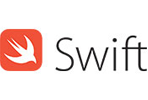
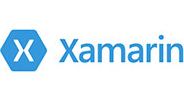
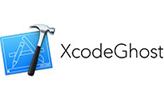


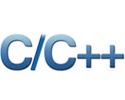

you can also reach us at our given
email address or phone number.




